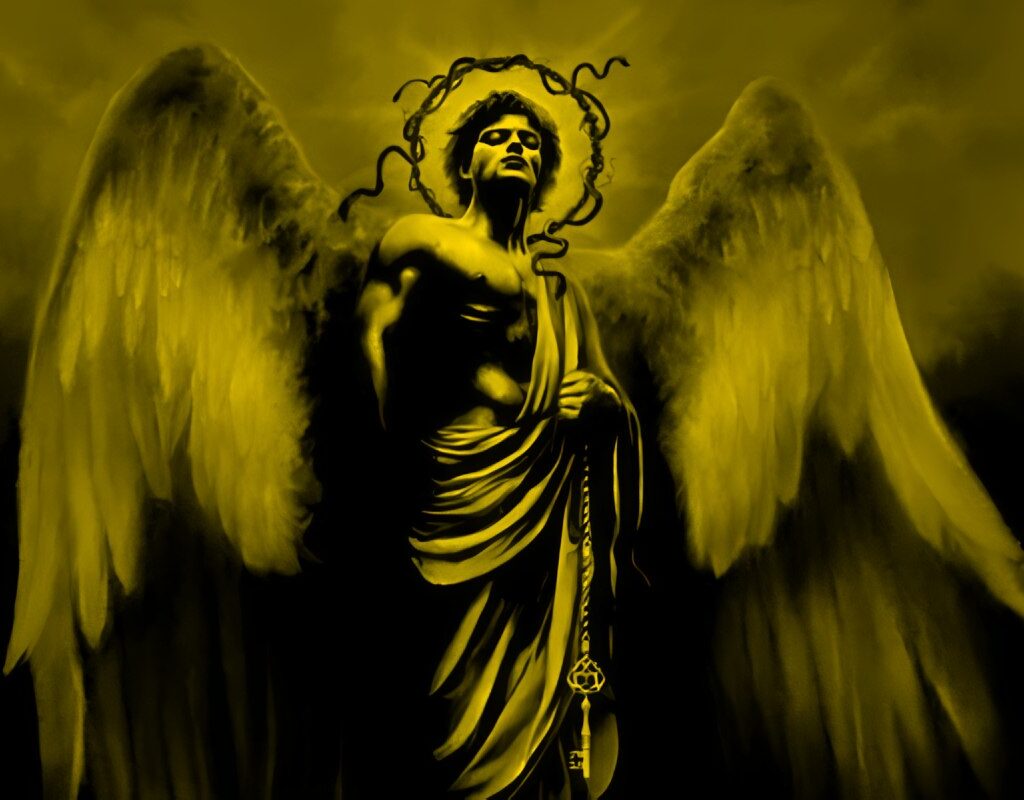The Devil, shrouded in mystery, has captivated the human imagination for millennia. This article delves into the question of his existence, drawing insights from thinkers like Charles Baudelaire to Fyodor Dostoevsky, and tracing his portrayal throughout history.
From Lucifer to Satan: Various Depictions of the Devil Across Global Cultures
In “The Flowers of Evil,” Charles Baudelaire claims that Satan’s greatest triumph in the modern era is convincing many, especially agnostics and atheists, that he doesn’t exist. Contrarily, O. Weininger in “Around the Supreme Thing” asserts:
“The concept guiding millions in their fight against inner evil takes form in the devil, enabling the individual to visualize the enemy externally and distance themselves from it.”
The challenge is pinpointing the root and nature of this evil. What shape does it take?
Once given an identity and form, it often becomes externalized. Fyodor Dostoevsky in “The Brothers Karamazov” suggests that “if God didn’t create the devil, then man created him in his own likeness.”
He acknowledges the devil’s existence but doesn’t provide direct evidence or clarify its origin or essence beforehand.
Firstly, we won’t attempt to present “proof” of his existence based on these diverse and contradictory claims. Secondly, we’ll steer clear of “personifying” him from a rational perspective grounded in science and philosophy.
The presence of “evil” in our world is undeniable, showing itself in countless ways. The information provided here is simply relayed. How it’s interpreted is up to the reader.
The Evolution of Perceptions about the Devil: From Childhood to Spiritual Revelation
Lucifer: The Enigma of His Origin and Essence According to the Church Fathers
During my childhood, the Devil or Satan was just a part of my faith, taught by my parents, along with the belief in his existence and fall. However, at the age of 20, during a spiritual retreat at the Tepeyac Retreat House, my interest in this figure grew.
The renowned Spanish mystic, St. John of the Cross, once stated that the world, the devil, and physical temptations are the main challenges for Christians. Thus, after finding God, I also encountered our most formidable adversaries. To ignore them would have been a big mistake on my part.
With the dawn of the Sandinista revolution in the early 80s, I began to notice him. His malice surrounded me in a dream, but as soon as I uttered “Maria,” that menacing presence vanished.
Delving into the teachings of the Church Fathers, I discovered a narrative that deeply resonated with me:
The devil has many names: Lucifer, Satan, Beelzebub, and Belial, among others. Yet, “Lucifer” piqued my curiosity due to stories about his origin and essence.
Lucifer: From the Admired Cherub to the Angel Fallen by Envy
Heavenly Rebellion: The Hidden Reasons Behind Lucifer’s Fall
It’s said that “Lucifer,” before his fall, was a “Cherub” of remarkable beauty known as “Lucifer” (Lc. 7, 18). Cherubs, meaning “pinnacle of wisdom,” rank just below “seraphs.” The latter, closest to God, symbolizes the “intensity or fire of love.”
“Lucifer,” blessed with vast knowledge and striking beauty, began to see himself equal to, if not greater than, God. Some scholars believe he hid his pride until faced with a challenge akin to Adam and Eve’s with the Tree of Knowledge in Eden.
Several Church Fathers believe feelings like “envy,” “pride,” and “jealousy” towards humanity caused his fall. “When examining the root of sin, it’s clearer in higher beings (angels) than in lower ones,” pondered St. Thomas Aquinas in the Middle Ages regarding humans.
“Therefore, pride was the devil’s sin, driven by these beings’ superior excellence,” (S.T.Q. 73, Art. 7). In other words, the devil’s sin was an irredeemable spiritual mistake. But the following story puzzled me even more:
The prophetic vision revealing to “Lucifer” God’s intention to become human and have a human mother, later revered as “Theotokos” or Mother of God, was intolerable to him.
For a “cherub,” venerating a lower-ranking woman or the Son of God in human form was unthinkable.
This became a primary reason for his rebellion and subsequent exile. Papini, in “The Devil,” also suggests that “Lucifer” was jealous of Jesus Christ for not being the redeemer of humanity.
While the devil and humans differ in causes and consequences, the devil “falls” from heaven due to his “pride” (Lc. 7:18), and Adam and Eve get “banished” from Eden for their “disobedience”.
From Lucifer to Iblis: The Many Faces of the Devil Across Cultures
Diabolical Metamorphosis: The Artistic Evolution of Evil’s Representation
Along with “Lucifer’s” fall, many angels were banished. However, redemption was available for those who “disobeyed,” but not for those who fell due to their “pride.” Across various cultures, the devilish figure is recognized.
In Egyptian tradition, he’s called “Seth”, in Persian as “Angra Mainyu”, in Hindu tradition as “Mara”, the Greeks name him “Typhon”, and in Islam, he’s “Iblis”. What truly grabs attention is his changing artistic depiction through the ages.
In the 17th-century work “The Temptations of St. Anthony”, demonic creatures bear grotesque animal faces. During the Middle Ages, he often appeared as a dark angel with horns, a tail, or even a dragon. But in more recent times, his image has shifted to something less fearsome and more elegant.
In “The Devil,” Papini describes him as “a pleasant man with good looks and refined manners.” In contemporary times, such descriptions remain consistent or have slight variations.
Beyond Art: The Devil in Politics, Poetry, and Music
The Devil and Imitation: Insights from Papini’s Perspective
The devil’s influence isn’t just in visual art; he has inspired politics, poetry, other arts, and music. Discussing these manifestations would be vast and cannot be fully covered here.
The harmful “magic” that evil can produce, according to Papini, is clear evidence of its existence and its negative impact.
From Papini’s viewpoint, the devil resembles an ape. In trying to equate himself with God, he became “God’s ape.” “Imitation” is an inherent trait of this creature.
The Italian scholar concludes that when someone tries to mimic Lucifer’s rebellion, they unknowingly become the “ape of the devil.”
This article is made possible thanks to the experiences of Humberto Belli Pereira, writer for El Nuevo Diario Nicaragua.




